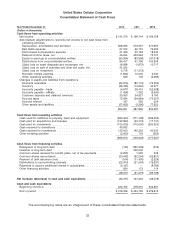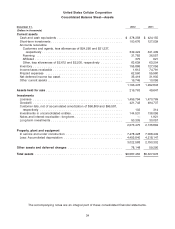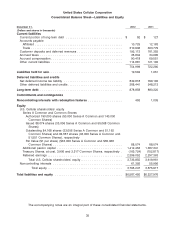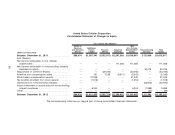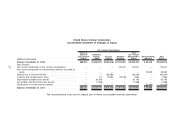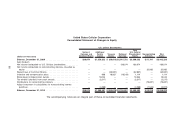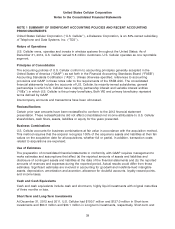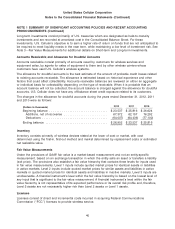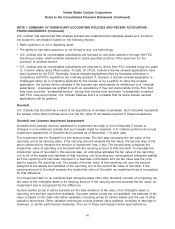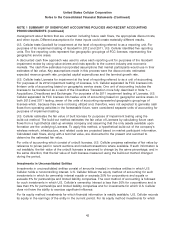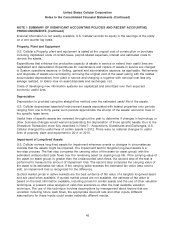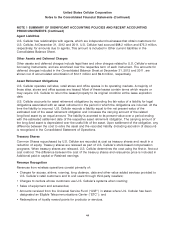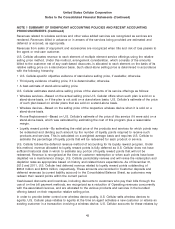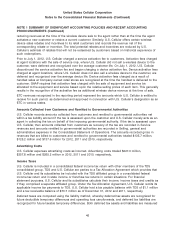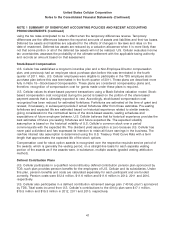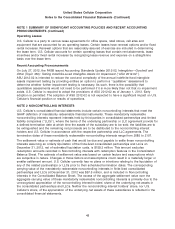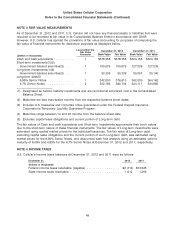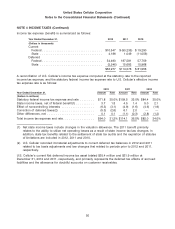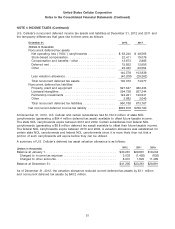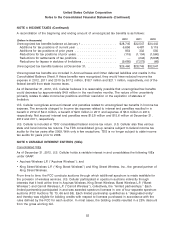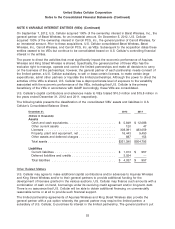US Cellular 2012 Annual Report Download - page 51
Download and view the complete annual report
Please find page 51 of the 2012 US Cellular annual report below. You can navigate through the pages in the report by either clicking on the pages listed below, or by using the keyword search tool below to find specific information within the annual report.United States Cellular Corporation
Notes to the Consolidated Financial Statements (Continued)
NOTE 1 SUMMARY OF SIGNIFICANT ACCOUNTING POLICIES AND RECENT ACCOUNTING
PRONOUNCEMENTS (Continued)
financial information is not readily available, U.S. Cellular records its equity in the earnings of the entity
on a one quarter lag basis.
Property, Plant and Equipment
U.S. Cellular’s Property, plant and equipment is stated at the original cost of construction or purchase
including capitalized costs of certain taxes, payroll-related expenses, interest and estimated costs to
remove the assets.
Expenditures that enhance the productive capacity of assets in service or extend their useful lives are
capitalized and depreciated. Expenditures for maintenance and repairs of assets in service are charged
to System operations expense or Selling, general and administrative expense, as applicable. Retirements
and disposals of assets are recorded by removing the original cost of the asset (along with the related
accumulated depreciation) from plant in service and charging it, together with removal cost less any
salvage realized, to (Gain) loss on asset disposals and exchanges, net.
Costs of developing new information systems are capitalized and amortized over their expected
economic useful lives.
Depreciation
Depreciation is provided using the straight-line method over the estimated useful life of the assets.
U.S. Cellular depreciates leasehold improvement assets associated with leased properties over periods
ranging from one to thirty years; such periods approximate the shorter of the assets’ economic lives or
the specific lease terms.
Useful lives of specific assets are reviewed throughout the year to determine if changes in technology or
other business changes would warrant accelerating the depreciation of those specific assets. Due to the
Divestiture Transaction more fully described in Note 7—Acquisitions, Divestitures and Exchanges, U.S.
Cellular changed the useful lives of certain assets in 2012. There were no material changes to useful
lives of property, plant and equipment in 2011 or 2010.
Impairment of Long-lived Assets
U.S. Cellular reviews long-lived assets for impairment whenever events or changes in circumstances
indicate that the assets might be impaired. The impairment test for tangible long-lived assets is a
two-step process. The first step compares the carrying value of the asset (or asset group) with the
estimated undiscounted cash flows over the remaining asset (or asset group) life. If the carrying value of
the asset (or asset group) is greater than the undiscounted cash flows, the second step of the test is
performed to measure the amount of impairment loss. The second step compares the carrying value of
the asset to its estimated fair value. If the carrying value exceeds the estimated fair value (less cost to
sell), an impairment loss is recognized for the difference.
Quoted market prices in active markets are the best evidence of fair value of a tangible long-lived asset
and are used when available. If quoted market prices are not available, the estimate of fair value is
based on the best information available, including prices for similar assets and the use of other valuation
techniques. A present value analysis of cash flow scenarios is often the best available valuation
technique. The use of this technique involves assumptions by management about factors that are
uncertain including future cash flows, the appropriate discount rate and other inputs. Different
assumptions for these inputs could create materially different results.
43


